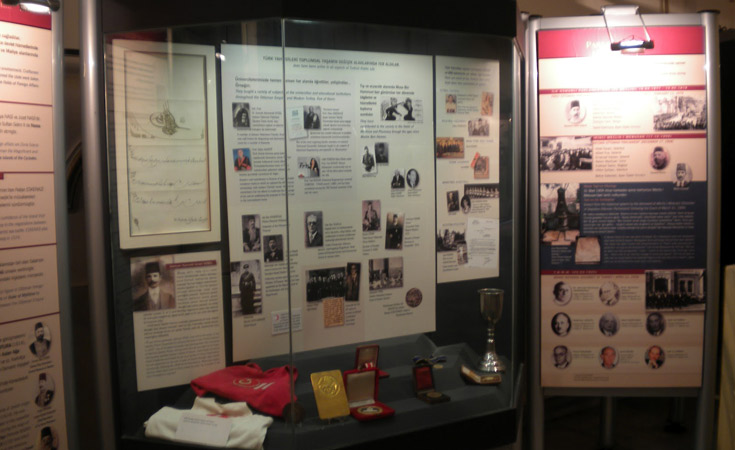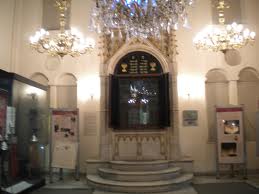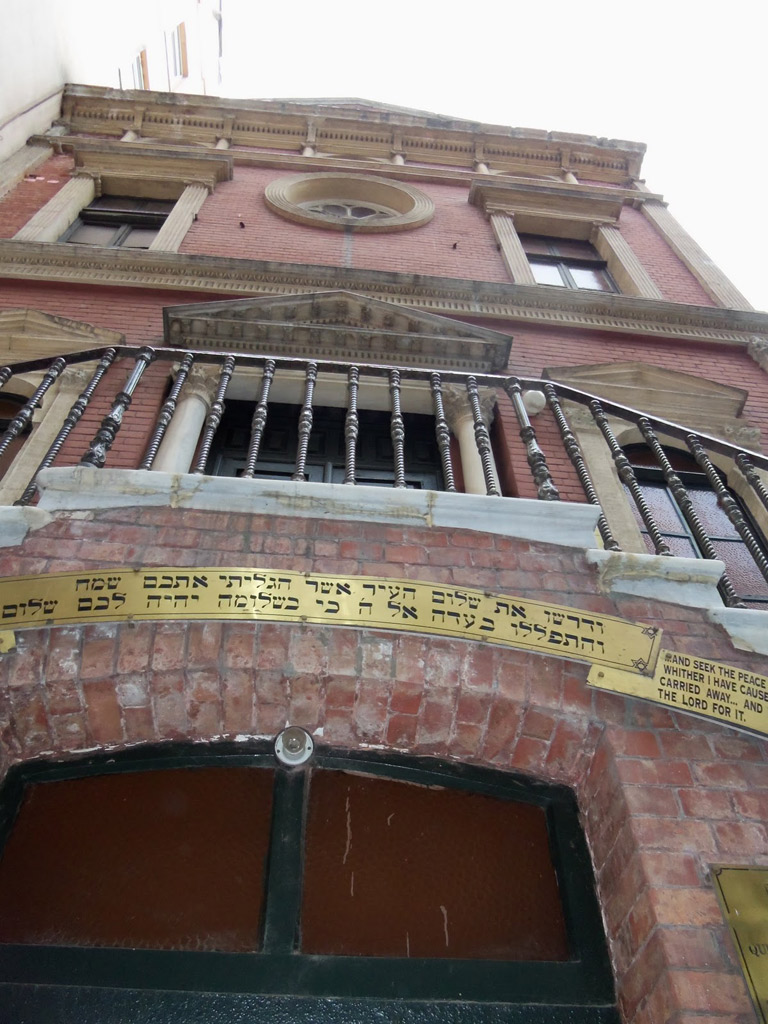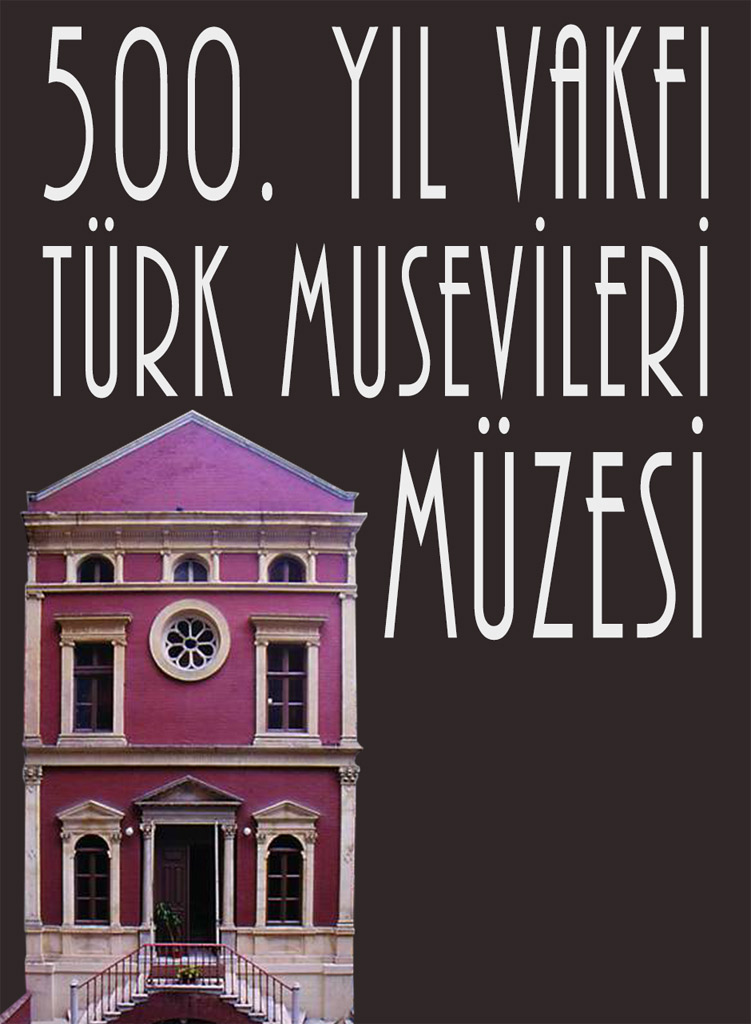The building in which the museum is housed is the site of the former Zülfaris Synagogue. It takes its name from a shortening of the old name of the street on which it is located: Zülf-ü arus. In the records of the Chief Rabbinate it is also known as Kal Kadoş Galata. There has been a synagogue on the since at least 1671. Rebuilt and repaired over time, the building saw its last major renovation in 2001. In April 1904, the building underwent both an exterior and interior restoration. In Ottoman Zülf-ü arus means “curls of the bride.” Having witnessed a countless number of weddings, it is no coincidence that today the name of the street is “Perçemli Sokak” (Street of Curls).
The site of both many joyous and painful ceremonies, one of its particularly important historical moments was a visit by Albert Cahn, the president of the Paris Jewish Philanthropic Association, in August 1856 during a memorial service for French Jewish soldiers that had died fighting alongside the Ottoman army in the Crimean War; the ceremony was also attend by a military honor guard led by the Ottoman Colonel and member of the chief of staff, Garbi Bey.
Another historical moment was on the 24th of January, 1909 when 86 delegates collected in the synagogue to choose Haim Nahum Efendi as the Ottoman Chief Rabbi in the place of Moşe Levi, who had held the position locum tenes and resigned in the aftermath of the declaration of a the constitutional monarchy (Meşrutiyet’in ilanı).
Zülfaris underwent repairs again starting in December, 1962 and by November, 1978 the decision was taken to only open the synagogue on Saturdays. On September 15th, 1979 the synagogue was assigned as a house of worship for those Jews living in Istanbul with roots in Edirne and Thrace. However within a short time the synagogue was provisionally closed owing to a decrease in the size of the congregation.
The question of the synagogue was raised during the 1992 celebrations commemorating the migrations of Sephardic Jews from Spain to the Ottoman Empire, and the decision was taken to transfer the building from the Neve Şalom Vakfı to the 500. Yıl Vakfı in order that it might be reopened as a the “500. Yıl Vakfı Turkish Jewish Museum.” The building was opened as a museum according to the proposal and design of Naim A. Güleryüz – with the material support of the Kamhi family and the valuable contributions of Jak Kamhi in particular. It opened on November 25, 2001 with magnificent ceremony.
The goal of the museum is to tell the seven-century story of togetherness that began with the conquest of Bursa by Orhan Bey in 1326, continued with the opening of the Ottoman Empire to Sephardic Jews by Beyazid II, and goes on right to the present day. Together with this goal the function of the museum is to inform both domestic and international audiences about the cultural legacy of Turkish Jews by compiling, exhibiting, protecting, commenting on and publishing materials on the subject. The existence of Jews in Anatolia, according to what can be demonstrated by archeological findings, goes back to 4th Century B.C.E. The museum, which has attempted to design its activities to have an impact on the wider community, has had a lasting and meaningful effect in sharing the lives, history and traditions of the Jews from both the 700 year history of the Ottoman Empire and Turkish Republic, and the approximately 24 centuries that Jews have lived in the region. The museum operates on three floors. In the main hall and the upper balcony it hosts exhibitions on the history, culture and social life; in the lower hall there is an ethnographic section.
Special Thanks to Naim A. Güleryüz
Researcher and Writer of the Original Turkish Text





























